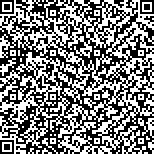| 摘要: |
| [目的]以农户兼业为视角,探讨不同兼业类型的农户“两型农业”技术采用意愿及其影响因素,为提高农户“两型农业”技术采用意愿,推动农业绿色发展提供政策参考。[方法]利用湖北省农户调查数据,以病虫害绿色防治技术为例,比较了不同兼业类型的农户“两型农业”技术采用的意愿差异,运用Binary Logistic回归模型探讨了影响不同兼业类型农户“两型农业”技术采用意愿的关键因素。[结果](1)多数农户对“两型农业”技术有采用意愿,其中采用意愿最高的为二兼农户,其次为一兼农户,纯农户采用意愿最低; (2)影响不同兼业类型农户采用意愿的共同因素主要集中在两方面,感知有用性方面对各类型兼业农户均有十分显著的正向影响; 感知易用性方面对各类型兼业农户均有显著的负向影响; (3)影响不同兼业类型农户对“两型农业”技术采用意愿的因素有明显差异,劳动力占比、种植面积、农药使用频率、较容易获得农业技术信息均对纯农户采用意愿有负向影响; 性别和农药使用频率分别对一兼农户有负向和正向影响; 文化程度、种植面积、家庭年纯收入和农药使用费用均对二兼农户有显著的正向影响。[结论]可通过加大“两型农业”宣传推广力度、增强政策支持和技术推广补贴力度、适度发展规模化经营等方式以提高农户对“两型农业”的认知和采用意愿,促进农业绿色发展。 |
| 关键词: 兼业“两型农业”技术采用意愿病虫害绿色防治技术影响因素 |
| DOI: |
| 分类号:F32322 |
| 基金项目:教育部哲学社会科学研究重大课题攻关项目“‘绿色化’的重大意义及实现途径研究”(15JZD014); 国家自然科学基金重点项目“现代农业科技发展创新体系研究”(71333006); 教育部研究阐释党的十九大精神专项任务“乡村振兴战略下农田生态系统质量提升的政策研究” |
|
| RESEARCH ON CONCURRENT BUSINESS OF FARMERS AND THEIR WILLINGNESS TO ADOPT "TWO ORIENTED AGRICULTURE" TECHNOLOGY*——A CASE STUDY OF GREEN CONTROL TECHNOLOGY FOR PLANT DISEASE AND PEST |
|
Zhang Anran1,2, Zhang Junbiao1,2, Gai Hao1,2
|
|
1. College of Economics & Management,Huazhong Agricultural University,Wuhan, Hubei 430070,China;2. Hubei Rural Development Research Center, Wuhan, Hubei 430070,China
|
| Abstract: |
| From the perspective of farmers′ concurrent business, this study explored the willingness to adopt "Two Oriented Agriculture" technology from farmers of different concurrent business types and its′ influencing factors. And it provided policy references in order to increase farmers′ willingness to adopt "Two Oriented Agriculture" technology and push forwards the green development in agriculture. Based on the investigation and research data of farmers in Hubei province, this study took the example of the green control technology for plant diseases and pests. Besides, it made the comparison over differences in the willingness to adopt "Two Oriented Agriculture" technology among farmers of different concurrent business types. In addition, it used the Binary Logistic regression model to find out the key factors for these differences. The results showed that (1) Most farmers were willing to adopt the "Two Oriented Agriculture" technology, of which the farmers whose major income source was not agricultural production had the highest willingness. While, the full time farmers had the lowest willingness. (2) The common influencing factors of the willingness of farmers in different types of concurrent business mainly focused on two aspects including the perceived usefulness had significant positive influence on farmers of all types of concurrent business; the perceived ease of use had obvious negative impact on farmers of all types of concurrent business. (3) There were distinct differences in the factors influencing farmers′ willingness to adopt "Two Oriented Agriculture" technology. The proportion of labor force, land management scale, times of pesticide dispensing, and the easy access to agricultural technical information had negative impacts on full time farmers; Gender and times of drug dispensing had negative and positive influence respectively on farmers whose major income source was agricultural production. And education level, land management scale, family annual net income and pesticide cost had significant positive influence on farmers whose major income source was not agricultural production. Therefore, the government should enhance the propaganda on "Two Oriented Agriculture" technology, strengthen policy support and technical promotion allowance, develop reasonably large scale operation to improve farmers′ cognition and adoption willingness on "Two Oriented Agriculture" and accelerate green development in agriculture. |
| Key words: concurrent business "Two Oriented Agriculture" technology willingness to adopt new technologies green control technology for plant diseases and pests influencing factors |

